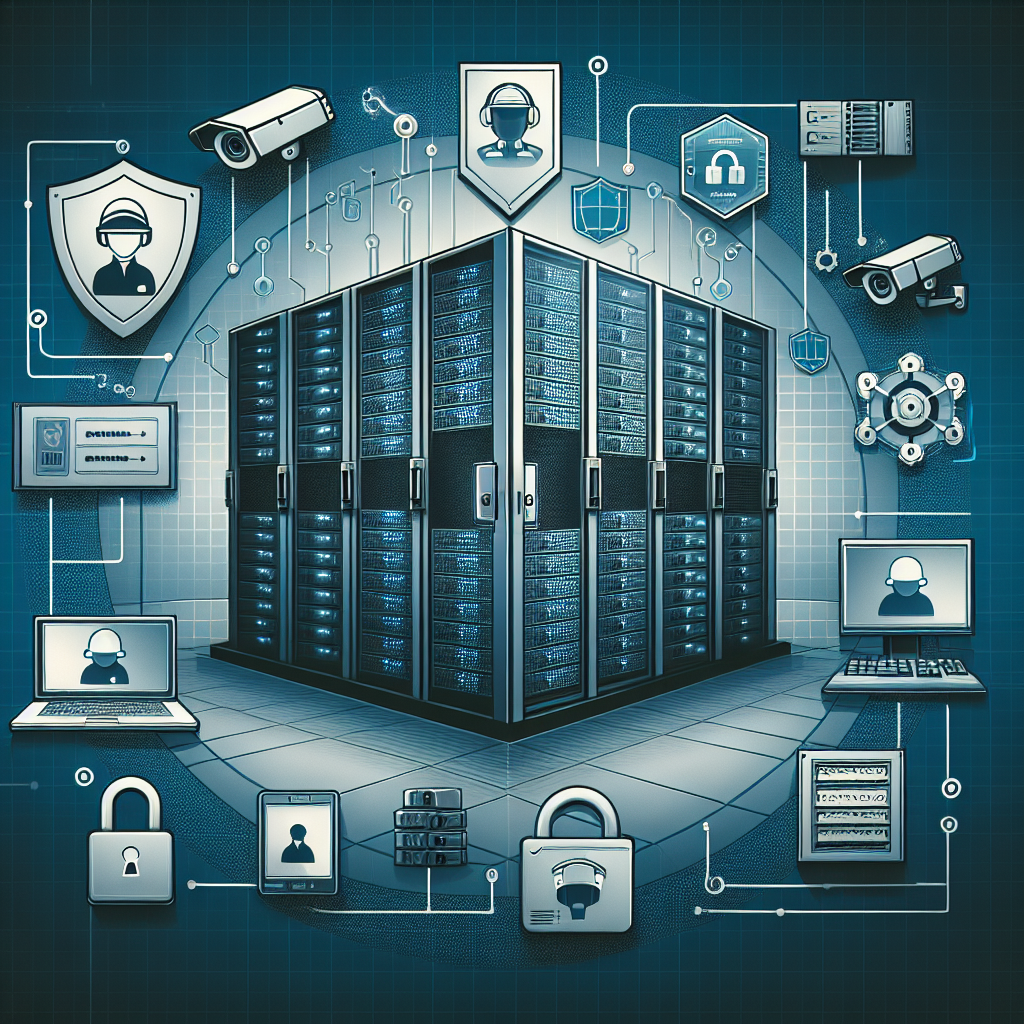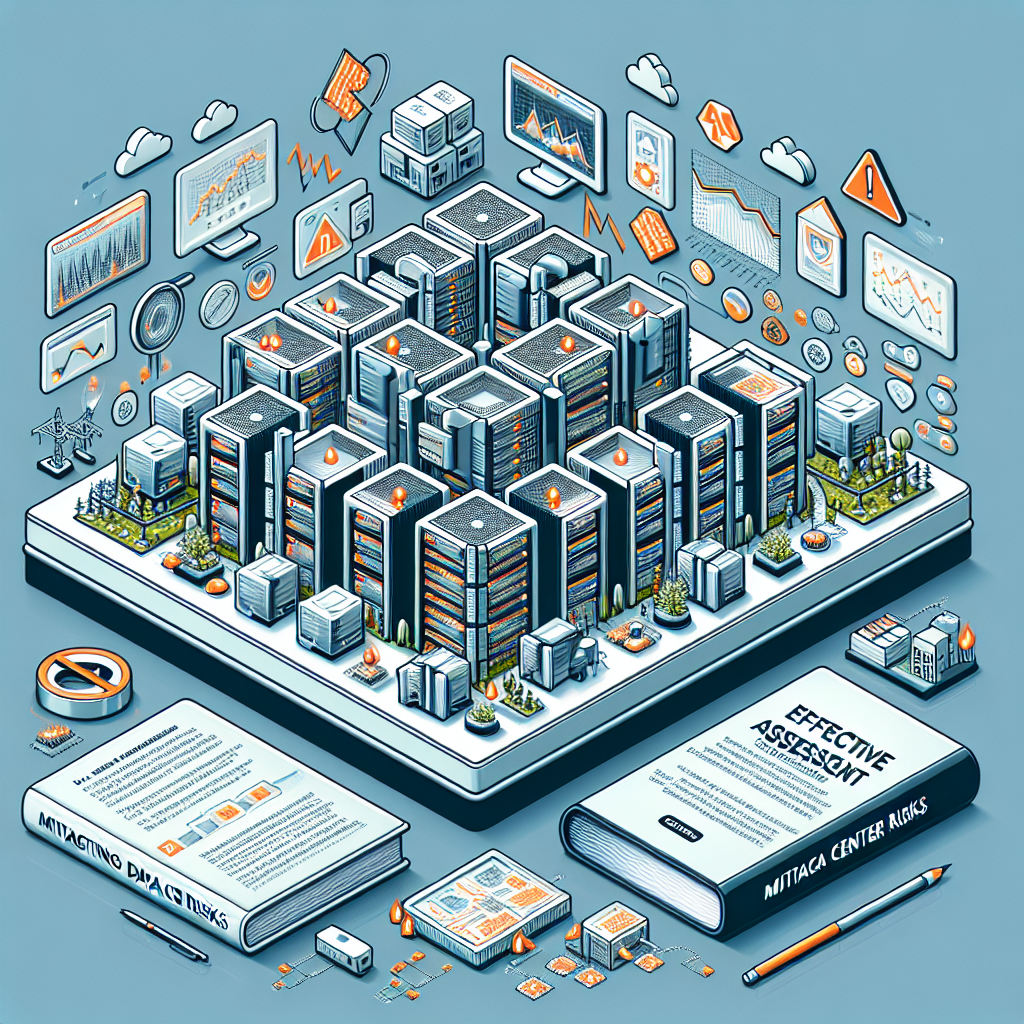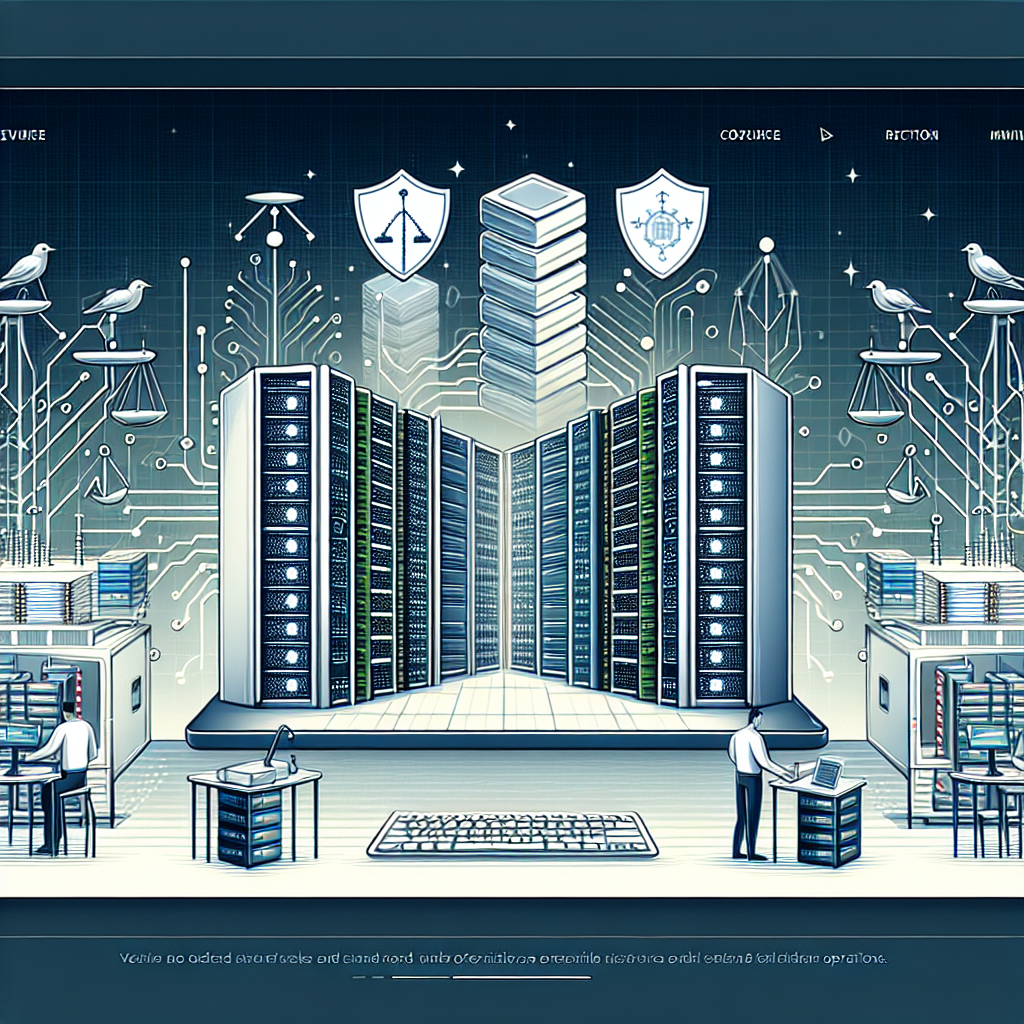Your cart is currently empty!
Tag: Risks

Mitigating Risks in Data Centers: A Guide to Safety and Security
Data centers play a crucial role in storing and managing vast amounts of data for organizations around the world. With the increasing reliance on technology and the growing threat of cyberattacks, it is more important than ever to prioritize safety and security in data centers. Mitigating risks in data centers is essential to ensure the protection of sensitive information and maintain the integrity of operations.One of the key risks in data centers is the threat of physical security breaches. Unauthorized access to the facility can result in theft of equipment, tampering with data, or even sabotage. To mitigate this risk, data center operators should implement strict access control measures such as biometric authentication, keycard access, and surveillance cameras. Regular security audits and employee training can also help prevent security breaches.
Another significant risk in data centers is the potential for power outages or equipment failures. These issues can lead to data loss, downtime, and financial losses for organizations. To mitigate this risk, data centers should have backup power systems in place, such as uninterruptible power supplies (UPS) and generators. Regular maintenance and testing of equipment can help identify and address potential issues before they escalate.
Cybersecurity is another critical aspect of mitigating risks in data centers. With the increasing sophistication of cyberattacks, data centers must have robust security measures in place to protect against data breaches and unauthorized access. This includes firewalls, encryption, intrusion detection systems, and regular security updates. Employee training on cybersecurity best practices can also help prevent human error that can lead to security vulnerabilities.
Environmental risks, such as temperature fluctuations and humidity levels, can also impact the safety and security of data centers. To mitigate these risks, data centers should have proper cooling and ventilation systems in place to regulate temperature and humidity levels. Monitoring systems can help identify potential environmental issues before they cause damage to equipment or data.
In conclusion, mitigating risks in data centers is essential to ensure the safety and security of sensitive information and maintain the integrity of operations. By implementing strict access control measures, backup power systems, cybersecurity protocols, and environmental monitoring, data center operators can protect against physical security breaches, equipment failures, cyberattacks, and environmental risks. Prioritizing safety and security in data centers is crucial for organizations to safeguard their data and maintain business continuity.

Mitigating the Risks of Data Center Downtime: Strategies for Business Continuity
Data center downtime can be a nightmare for businesses, resulting in lost revenue, damaged reputation, and potential data loss. To mitigate the risks associated with data center downtime, businesses need to implement strategies for business continuity. Here are some key strategies to consider:1. Implement a robust disaster recovery plan: A disaster recovery plan outlines the steps to take in the event of a data center outage. This plan should include backup processes, data replication strategies, and communication protocols to ensure a swift and effective response to any downtime event.
2. Invest in redundant infrastructure: Redundancy is key to minimizing the impact of data center downtime. This includes redundant power supplies, cooling systems, and network connections to ensure that critical systems remain operational even in the event of a failure.
3. Regularly test and update your disaster recovery plan: It’s important to regularly test and update your disaster recovery plan to ensure that it remains effective in mitigating the risks of data center downtime. This includes conducting regular drills and simulations to identify any weaknesses in your plan and address them proactively.
4. Monitor and manage your data center environment: Monitoring your data center environment in real-time can help you identify potential issues before they escalate into downtime events. Implementing a comprehensive monitoring and management solution can provide visibility into the health and performance of your data center infrastructure, allowing you to take proactive measures to prevent downtime.
5. Train your staff: Your employees are a critical part of your business continuity strategy. Make sure that your staff are trained on the procedures outlined in your disaster recovery plan and are familiar with their roles and responsibilities in the event of a data center outage.
By implementing these strategies for business continuity, businesses can mitigate the risks of data center downtime and ensure that critical systems remain operational in the face of unexpected events. Investing in a robust disaster recovery plan, redundant infrastructure, regular testing and updates, monitoring and management solutions, and staff training can help businesses minimize the impact of downtime and maintain business continuity in the face of adversity.

Understanding the Impact of Data Center Risks: A Closer Look at Risk Assessment
In today’s digital age, data centers play a crucial role in storing, processing, and managing vast amounts of information. From sensitive customer data to critical business operations, data centers are the backbone of modern organizations. However, with great power comes great responsibility, and data center risks can have a significant impact on a company’s operations and reputation.To mitigate these risks, it is essential for organizations to conduct a thorough risk assessment of their data center operations. By identifying potential vulnerabilities and threats, companies can take proactive measures to safeguard their data and ensure the smooth functioning of their IT infrastructure.
One of the key risks that data centers face is the threat of physical security breaches. Unauthorized access to data centers can result in data theft, tampering, or destruction, leading to financial losses and reputational damage. To prevent such incidents, organizations should implement strict access controls, surveillance systems, and security protocols to protect their facilities from intruders.
Another common risk in data centers is the threat of natural disasters such as earthquakes, floods, or fires. These events can cause power outages, equipment damage, and data loss, disrupting business operations and causing downtime. To mitigate the impact of natural disasters, companies should invest in backup power systems, redundant infrastructure, and disaster recovery plans to ensure business continuity in the event of a catastrophe.
Cybersecurity threats also pose a significant risk to data centers, with hackers targeting sensitive information for financial gain or malicious intent. Phishing attacks, malware infections, and ransomware are just a few examples of cyber threats that can compromise data center security. To protect against these risks, organizations should implement robust cybersecurity measures, such as firewalls, encryption, and intrusion detection systems, to detect and prevent cyber attacks.
In addition to these external risks, data centers also face internal threats from human error, equipment failures, and software glitches. These internal risks can lead to data corruption, system downtime, and operational disruptions if not managed effectively. By conducting regular audits, training staff on best practices, and monitoring system performance, organizations can minimize the impact of internal risks on their data center operations.
In conclusion, understanding the impact of data center risks is essential for organizations to protect their valuable data and ensure the continuity of their business operations. By conducting a comprehensive risk assessment, companies can identify potential vulnerabilities and implement proactive measures to mitigate the impact of physical security breaches, natural disasters, cybersecurity threats, and internal risks on their data center operations. By investing in robust security measures and disaster recovery plans, organizations can safeguard their data centers and maintain the trust of their customers in an increasingly digital world.

Mitigating Data Center Risks: A Comprehensive Guide to Effective Assessment
Data centers play a crucial role in the smooth operation of businesses, housing vital information and infrastructure that support day-to-day operations. However, data centers are not immune to risks, and any disruption can have catastrophic consequences for a business. It is essential for organizations to conduct a comprehensive assessment of data center risks and implement effective mitigation strategies to ensure business continuity.Identifying and assessing risks is the first step in mitigating data center risks. This involves conducting a thorough examination of all potential threats that could impact the data center, including natural disasters, cyber attacks, equipment failures, and human errors. A risk assessment should also consider the potential impact of these threats on the business, such as financial losses, reputational damage, and legal implications.
Once risks have been identified, organizations can develop a comprehensive risk mitigation strategy. This involves implementing a range of measures to reduce the likelihood of a risk occurring and minimize its impact if it does. Some key risk mitigation strategies include:
1. Implementing robust security measures: Data centers are prime targets for cyber attacks, so it is crucial to implement robust security measures to protect sensitive information. This includes using firewalls, encryption, and access controls to prevent unauthorized access to data.
2. Maintaining backup and redundancy: To mitigate the risk of data loss due to equipment failure or natural disasters, organizations should maintain regular backups of critical data and implement redundancy measures to ensure data can be quickly restored in the event of an outage.
3. Conducting regular maintenance and testing: Regular maintenance and testing of data center equipment and systems are essential to identify and address potential issues before they escalate into serious problems.
4. Training and education: Human error is a common cause of data center disruptions, so organizations should provide comprehensive training and education to staff on data center best practices and security protocols.
5. Developing a comprehensive disaster recovery plan: In the event of a major data center disruption, a comprehensive disaster recovery plan can help organizations quickly recover and resume operations. This plan should outline key roles and responsibilities, as well as the steps to be taken to restore data and infrastructure.
By conducting a comprehensive assessment of data center risks and implementing effective mitigation strategies, organizations can minimize the likelihood of disruptions and ensure business continuity. Mitigating data center risks requires a proactive approach, with a focus on prevention and preparedness. By investing in robust security measures, regular maintenance, and disaster recovery planning, organizations can protect their data centers and safeguard their business operations.

Mitigating Risks and Ensuring Resilience in Data Center Operations
In today’s digital age, data centers play a crucial role in the operations of businesses and organizations. These facilities house and manage huge amounts of data that are essential for everyday operations, making them a prime target for cyber attacks, natural disasters, and other risks that can disrupt operations and compromise sensitive information. To ensure the resilience of data center operations and mitigate potential risks, organizations must implement robust strategies and best practices.One of the key factors in mitigating risks and ensuring resilience in data center operations is having a comprehensive risk management plan in place. This plan should identify potential threats, vulnerabilities, and risks that could impact the data center and outline strategies to mitigate or eliminate them. Regular risk assessments should be conducted to identify any new threats or risks that may have emerged and to ensure that existing measures are effective.
Physical security is another crucial aspect of ensuring the resilience of data center operations. Data centers should be equipped with strong physical security measures, such as access controls, surveillance cameras, and security personnel, to prevent unauthorized access and protect against physical threats. Regular security audits should be conducted to identify any weaknesses in the physical security measures and address them promptly.
In addition to physical security, data centers must also have robust cybersecurity measures in place to protect against cyber threats. This includes implementing firewalls, intrusion detection and prevention systems, encryption, and regular security updates and patches. Employees should also receive training on cybersecurity best practices to reduce the risk of human error leading to security breaches.
Data centers should also have redundancy and failover mechanisms in place to ensure continuous operations in the event of a power outage, hardware failure, or other disruptions. This includes having backup power sources, redundant network connections, and failover servers that can quickly take over in case of a failure.
Regular testing and monitoring of systems and processes are also essential to ensure the resilience of data center operations. This includes conducting regular penetration testing, vulnerability assessments, and monitoring for any unusual activity or signs of a security breach. Any issues or vulnerabilities identified should be promptly addressed to prevent them from being exploited by malicious actors.
Overall, mitigating risks and ensuring resilience in data center operations requires a comprehensive approach that includes robust risk management, physical and cybersecurity measures, redundancy and failover mechanisms, and regular testing and monitoring. By implementing these best practices, organizations can minimize the risk of disruptions and data breaches and ensure the continuous and secure operation of their data centers.
